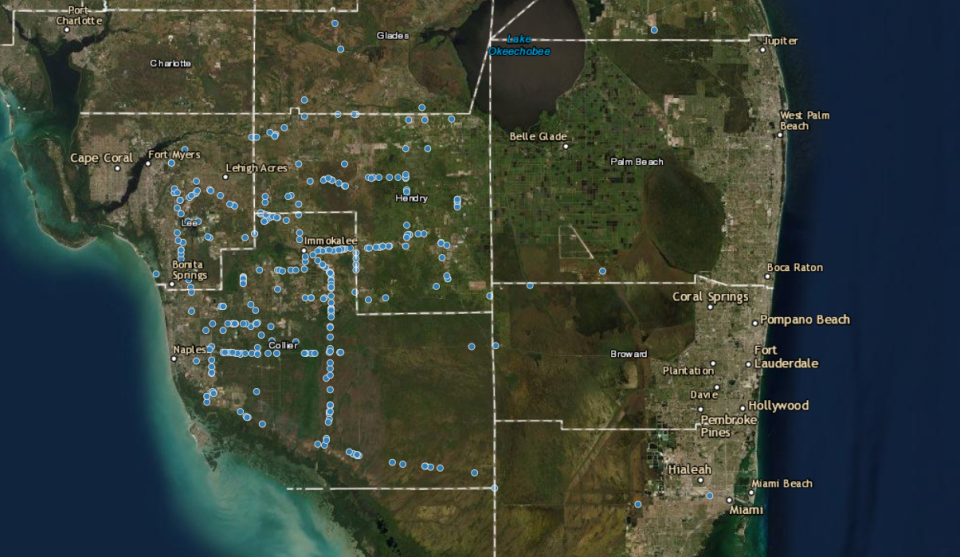After Florida’s Democratic Party announced Saturday night at a fundraising event that the party was changing its logo from the traditional donkey to the Florida panther, the GOP was quick to mock them for choosing a species that had nearly been wiped out.
“First, I would like to congratulate Nikki Fried on, by our count, the 28th relaunch of the Florida Democrats under her leadership,” said Florida GOP Chairman Evan Power. “The choice in changing your mascot from a donkey to a Florida Panther is particularly fitting with its status as an endangered species.”
But the Dems picked the iconic panther and official state animal on purpose. “The Florida panther won’t back down from a fight,” Florida Democratic Party chair Nikki Fried said at the event.

In a video shown then and released online, she said, “We gave the donkey the boot. It is time to kick ass.”
Just what creature has the Democrats, out of power in Florida politics for decades, chosen as their guiding icon?
What is the Florida panther?


Sleek and stealthy, the Florida panther, or the Puma concolor coryi, is a subspecies of mountain lion and one of only two native cat species in Florida, according to the Florida Fish and Wildlife Conservation Commission (FWC). The other is the bobcat.
Adult panthers are tawny brown, from 5 to 7 feet long with a tail as long as the body, and can weigh between 60 to 160 pounds. Bobcats are much smaller, the FWC said, with shorter tails.
Where do Florida panthers live?
Once appearing all over the southeastern United States, Florida panthers dwindled to less than 5% of their historic range, according to a report from the Florida Panther Recovery Plan (FPRP), in one breeding population in southern Florida. They prefer forested areas with dense ground vegetation for den sites and stalking cover.
Florida panthers are most often seen in the Big Cypress/Everglades ecosystem in Collier, Lee, Hendry, Monroe and Miami-Dade counties. They hunt mostly deer.
Panthers are solitary, do not pair bond, and tend to be wide-ranging, requiring large areas to meet their needs. Females may range 60-75 square miles, but males typically roam 160-200 square miles.
Are Florida panthers endangered?
The Florida panther is federally listed as endangered under the Endangered Species Act of 1973 and is on the state endangered lists for Florida, Georgia, Louisiana and Mississippi.
While the panther population has made some amazing comebacks since the 1970s, panthers are still at risk from habitat loss, vehicle collisions, genetic issues, urbanization, residential development, road construction, mining and mineral exploration and farm expansion, the FPRP said. Some Florida panthers and bobcats have also been spotted suffering from a rare neurological disease.
But the biggest threat is cars.
Most Florida panthers killed by collisions


FWC records show that 13 panthers have been killed in Florida so far this year, with the latest one found in Collier County Friday. Eleven were struck by vehicles, one by a train and one by unknown causes.
That matches the 13 killed in all of 2023.
The annual death toll is usually about two dozen per year, according to Mia McCormick, an advocate with Environment Florida.
How many Florida panthers are there?
There are approximately 120-230 adult panthers in Florida, the FWC reports. It’s believed that there used to be as many as 3,000 before the Europeans arrived.
Before 1950 it was legal to hunt panthers, and even after they were protected the population remained small and suffered from inbreeding. There were roughly 30 panthers in Florida in the early 1980s.
The U.S. Fish and Wildlife Service and FWC started a genetic restoration project in 1995 to introduce seven female Texas cougars, which helped revitalize the genetic health and vigor of the local population, the FWC said.
Is the Florida panther the state animal?
In 1982, schoolchildren across the state voted on the state animal and they chose the Florida panther.
Many Florida schools use the panther as their sports team mascot, and it’s the name of an official National League Hockey team in Sunrise. About 36,000 Floridians a year pay extra for a “Protect the Panther” license plate. It’s the 17th most popular specialty plate out of the 174 offered in the state.
What do I do if I see a sick, injured or dead Florida panther?
You can help the state track panthers and panther deaths by reporting sightings online at app.myfwc.com/LE/WildlifeAlert, email Tip@MyFWC.com or call 888-404-FWCC (888-404-3922). Cellphone users can call #FWC.
This article originally appeared on The Daytona Beach News-Journal: Florida panther chosen by democrats. What to know about endangered cat
